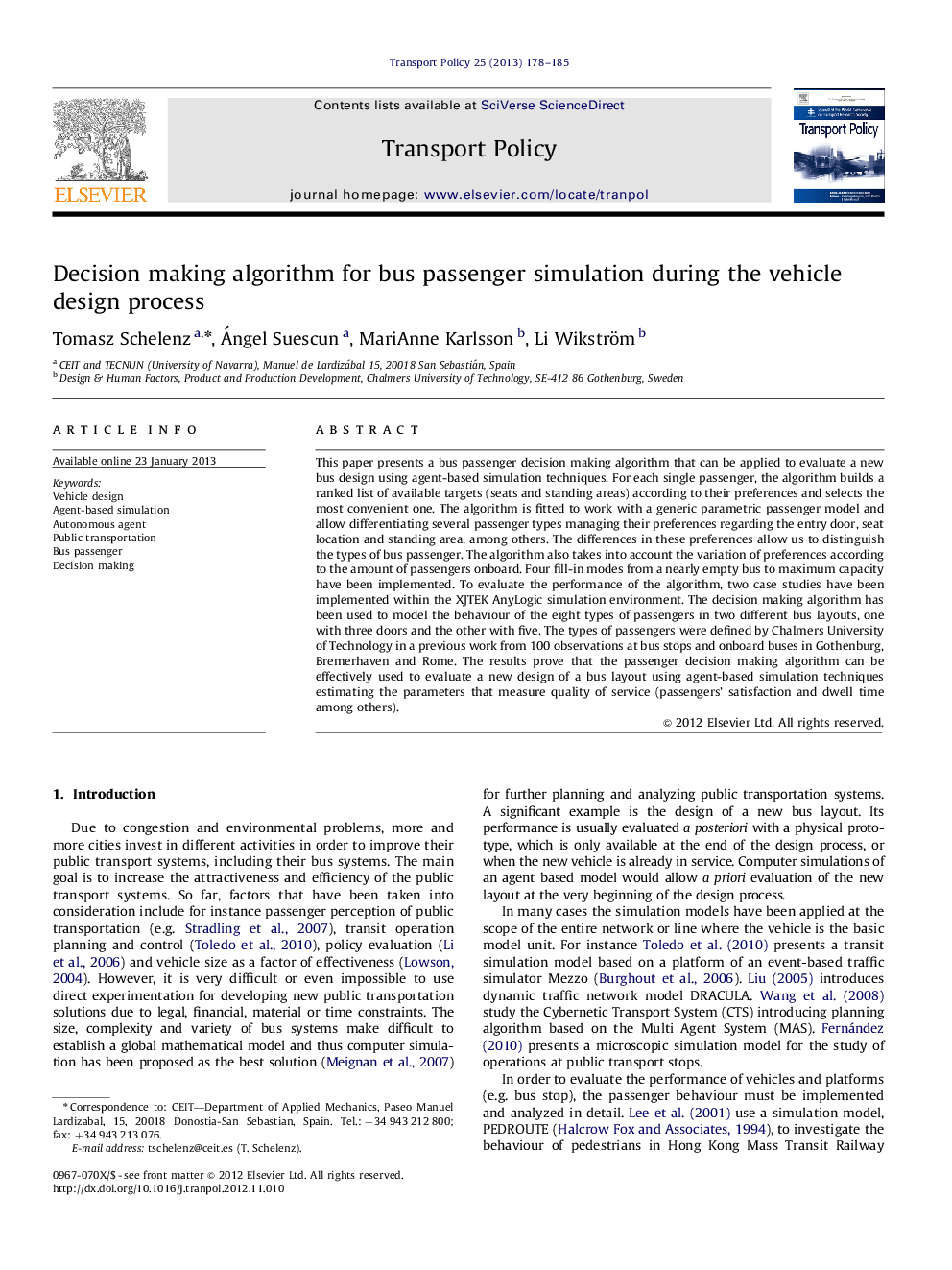| Article ID | Journal | Published Year | Pages | File Type |
|---|---|---|---|---|
| 1065019 | Transport Policy | 2013 | 8 Pages |
This paper presents a bus passenger decision making algorithm that can be applied to evaluate a new bus design using agent-based simulation techniques. For each single passenger, the algorithm builds a ranked list of available targets (seats and standing areas) according to their preferences and selects the most convenient one. The algorithm is fitted to work with a generic parametric passenger model and allow differentiating several passenger types managing their preferences regarding the entry door, seat location and standing area, among others. The differences in these preferences allow us to distinguish the types of bus passenger. The algorithm also takes into account the variation of preferences according to the amount of passengers onboard. Four fill-in modes from a nearly empty bus to maximum capacity have been implemented. To evaluate the performance of the algorithm, two case studies have been implemented within the XJTEK AnyLogic simulation environment. The decision making algorithm has been used to model the behaviour of the eight types of passengers in two different bus layouts, one with three doors and the other with five. The types of passengers were defined by Chalmers University of Technology in a previous work from 100 observations at bus stops and onboard buses in Gothenburg, Bremerhaven and Rome. The results prove that the passenger decision making algorithm can be effectively used to evaluate a new design of a bus layout using agent-based simulation techniques estimating the parameters that measure quality of service (passengers' satisfaction and dwell time among others).
► This paper presents a new decision making algorithm for simulating bus passengers. ► Algorithm can be applied in agent-based simulation environments to evaluate the bus design concepts. ► The algorithm models the interaction between passengers and the objects onboard. ► Passenger preferences are modelled considering physiological and psychological aspects. ► The algorithm usability is shown in 3-door and 5-door bus layouts with several types of passengers.
